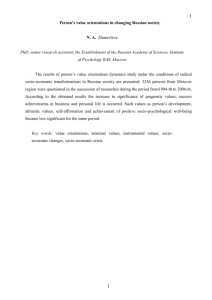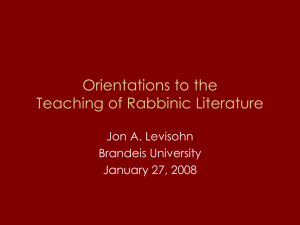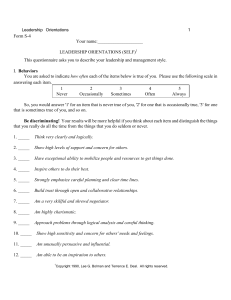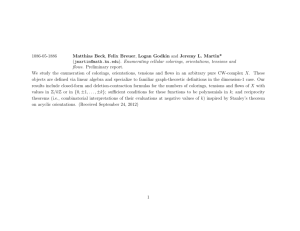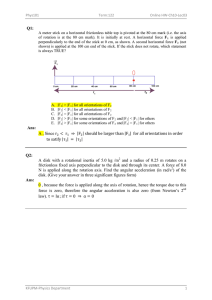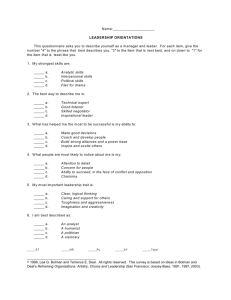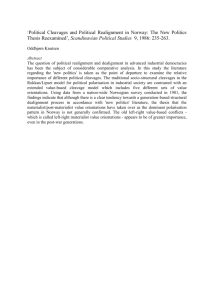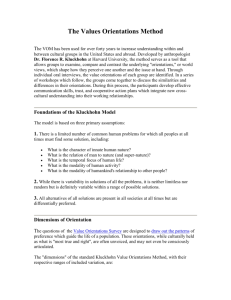Conference Abstract
advertisement
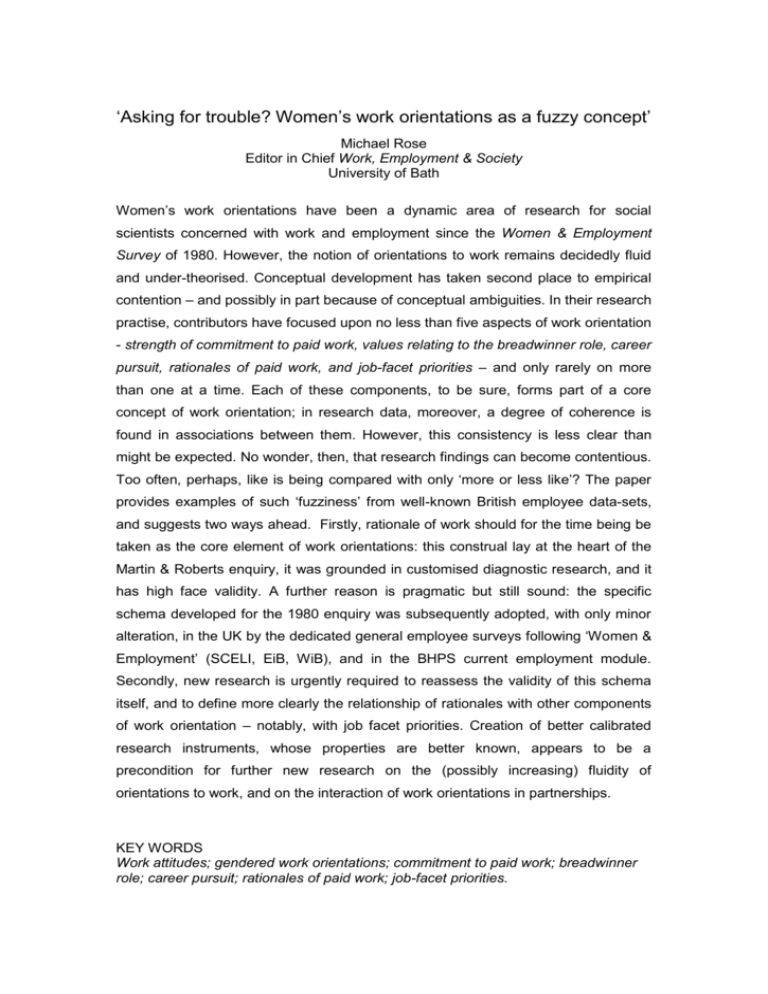
‘Asking for trouble? Women’s work orientations as a fuzzy concept’ Michael Rose Editor in Chief Work, Employment & Society University of Bath Women’s work orientations have been a dynamic area of research for social scientists concerned with work and employment since the Women & Employment Survey of 1980. However, the notion of orientations to work remains decidedly fluid and under-theorised. Conceptual development has taken second place to empirical contention – and possibly in part because of conceptual ambiguities. In their research practise, contributors have focused upon no less than five aspects of work orientation - strength of commitment to paid work, values relating to the breadwinner role, career pursuit, rationales of paid work, and job-facet priorities – and only rarely on more than one at a time. Each of these components, to be sure, forms part of a core concept of work orientation; in research data, moreover, a degree of coherence is found in associations between them. However, this consistency is less clear than might be expected. No wonder, then, that research findings can become contentious. Too often, perhaps, like is being compared with only ‘more or less like’? The paper provides examples of such ‘fuzziness’ from well-known British employee data-sets, and suggests two ways ahead. Firstly, rationale of work should for the time being be taken as the core element of work orientations: this construal lay at the heart of the Martin & Roberts enquiry, it was grounded in customised diagnostic research, and it has high face validity. A further reason is pragmatic but still sound: the specific schema developed for the 1980 enquiry was subsequently adopted, with only minor alteration, in the UK by the dedicated general employee surveys following ‘Women & Employment’ (SCELI, EiB, WiB), and in the BHPS current employment module. Secondly, new research is urgently required to reassess the validity of this schema itself, and to define more clearly the relationship of rationales with other components of work orientation – notably, with job facet priorities. Creation of better calibrated research instruments, whose properties are better known, appears to be a precondition for further new research on the (possibly increasing) fluidity of orientations to work, and on the interaction of work orientations in partnerships. KEY WORDS Work attitudes; gendered work orientations; commitment to paid work; breadwinner role; career pursuit; rationales of paid work; job-facet priorities.
